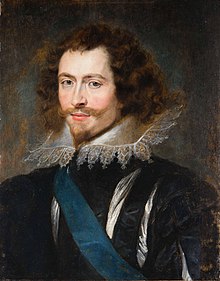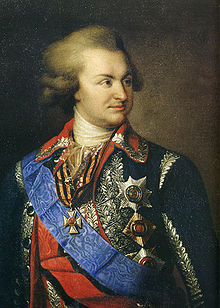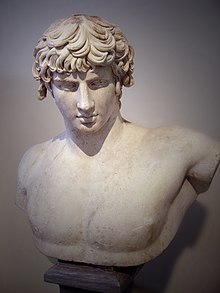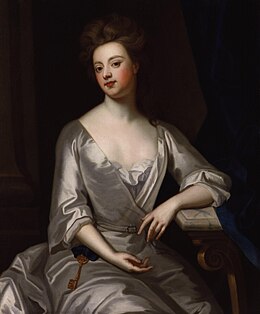
A favourite was the intimate companion of a ruler or other important person. In post-classical and early-modern Europe, among other times and places, the term was used of individuals delegated significant political power by a ruler. It was especially a phenomenon of the 16th and 17th centuries, when government had become too complex for many hereditary rulers with no great interest in or talent for it, and political institutions were still evolving. From 1600 to 1660 there were particular successions of all-powerful minister-favourites in much of Europe, particularly in Spain, England, France and Sweden.[1]
By the late 17th century, the royal favourite as quasi-Prime Minister declined; in France, the King resolved to rule directly, while in Britain, as the power of the monarch relative to Parliament declined, executive power slowly passed to the new office of Prime Minister and other parliamentary ministers.
The term is also sometimes employed by writers who want to avoid terms such as "royal mistress", "friend", "companion", or "lover" (of either sex). Some favourites had sexual relations with their monarch (or the monarch's spouse), but this was far from universal. Many were favoured for their skill as administrators, while others were close friends of the monarch.
The term has an inbuilt element of disapproval and is defined by the Oxford English Dictionary as "One who stands unduly high in the favour of a prince",[2] citing Shakespeare: "Like favourites/ Made proud by Princes" (Much Ado about Nothing, 3.1.9[3]).

Favourites inevitably tended to incur the envy and loathing of the rest of the nobility, and monarchs were sometimes obliged by political pressure to dismiss or execute them; in the Middle Ages nobles often rebelled in order to seize and kill a favourite. Too close a relationship between monarch and favourite was seen as a breach of the natural order and hierarchy of society. Since many favourites had flamboyant "over-reaching" personalities, they often led the way to their own downfall with their rash behaviour. As the opinions of the gentry and bourgeoisie grew in importance, they too often strongly disliked favourites. Dislike from all classes could be especially intense in the case of favourites who were elevated from humble, or at least minor, backgrounds by royal favour. Titles and estates were usually given lavishly to favourites, who were compared to mushrooms because they sprang up suddenly overnight, from a bed of excrement. The King's favourite Piers Gaveston is a "night-grown mushrump" (mushroom) to his enemies in Christopher Marlowe's Edward II.[4]
Their falls could be even more sudden, but after about 1650, executions tended to give way to quiet retirement. Favourites who came from the higher nobility, such as Leicester, Lerma, Olivares, and Oxenstierna, were often less resented and lasted longer. Successful minister-favourites also usually needed networks of their own favourites and relatives to help them carry out the work of government – Richelieu had his "créatures" and Olivares his "hechuras".[5] Oxenstierna and William Cecil, who both died in office, successfully trained their sons to succeed them.
The favourite can often not be easily distinguished from the successful royal administrator, who at the top of the tree certainly needed the favour of the monarch, but the term is generally used of those who first came into contact with the monarch through the social life of the court, rather than the business of politics or administration. Figures like William Cecil and Jean-Baptiste Colbert, whose accelerated rise through the administrative ranks owed much to their personal relations with the monarch, but who did not attempt to behave like grandees of the nobility, were also often successful. Elizabeth I had Cecil as Secretary of State and later Lord High Treasurer from the time she ascended the throne in 1558 until his death 40 years later. She had more colourful relationships with several courtiers; the most lasting and intimate one was with Robert Dudley, Earl of Leicester, who was also a leading politician.[6] Only in her last decade was the position of the Cecils, father and son, challenged, by Robert Devereux, 2nd Earl of Essex, when he fatally attempted a coup against the younger Cecil.
Cardinal Wolsey was one figure who rose through the administrative hierarchy, lived extremely ostentatiously, then fell suddenly from power. In the Middle Ages in particular, many royal favourites were promoted in the church, English examples including Saints Dunstan and Thomas Becket; Bishops William Waynflete, Robert Burnell and Walter Reynolds. Cardinal Granvelle, like his father, was a trusted Habsburg minister who lived grandly, but he was not really a favourite, partly because most of his career was spent away from the monarch.

Some favourites came from very humble backgrounds: Archibald Armstrong, jester to James I of England infuriated everyone else at court but managed to retire a wealthy man; unlike Robert Cochrane, a stonemason (probably a senior one, more like an architect than an artisan) who became Earl of Mar before the Scottish nobles revolted against him and hanged him and other low-born favourites of James III of Scotland. Melchior Khlesl, minister-favourite of Emperor Matthias (1609-1618) and cardinal, was the son of a Protestant baker in Vienna.[7] Olivier le Daim, the barber of Louis XI, acquired a title and important military commands before he was executed on vague charges brought by nobles shortly after his master died, without the knowledge of the new king. It has been claimed that le Daim's career was the origin of the term, as favori (the French word) first appeared around the time of his death in 1484. Privado in Spanish was older, but was later partly replaced by the term valido; in Spanish, both terms were less derogatory than in French and English.[8] Spain had a succession of validos during the reigns of Philip II, Philip III, and Philip IV.[9]
Such rises from menial positions became progressively harder as the centuries progressed; one of the last families able to jump the widening chasm between servants and nobility was that of Louis XIV's valet, Alexandre Bontemps, whose descendants, holding the office for a further three generations, married into many great families, even eventually including the extended royal family itself. Queen Victoria's John Brown came much too late; the devotion of the monarch and ability to terrorise her household led to hardly any rise in social or economic position.
In England, the scope for giving political power to a favourite was reduced by the growing importance of Parliament. After the "mushroom" Buckingham was assassinated by John Felton in 1628, Charles I turned to Thomas Wentworth, 1st Earl of Strafford, who had been a leader of Parliamentary opposition to Buckingham and the King, but had become his supporter after Charles made concessions. Strafford can therefore hardly be called a favourite in the usual sense, although his relationship with Charles became very close. He was also from a well-established family, with powerful relations. After several years in power, Strafford was impeached by a Parliament now very hostile to him. When that process failed, it passed a bill of attainder for his execution without trial, and it put enough pressure on Charles that, to his subsequent regret, Charles signed it, and Strafford was executed in 1641. There were later minister-favourites in England, but they knew that the favour of the monarch alone was not sufficient to rule, and most also had careers in Parliament. In 1721, the new office of Prime Minister was created, formalizing the replacement of ministers chosen by the monarch with a political head of government.

In France, the movement was in the opposite direction. On the death of Cardinal Mazarin in 1661, the 23-year-old Louis XIV determined that he would rule himself, and he did not allow the delegation of power to ministers that had happened during the previous 40 years. The absolute monarchy pioneered by Cardinal Richelieu, Mazarin's predecessor, was to be led by the monarch himself. Louis had many powerful ministers, notably Jean-Baptiste Colbert, in finances, and François-Michel le Tellier, Marquis de Louvois, the army, but the overall direction was never delegated, and no subsequent French minister ever equalled the power of the two cardinals.
In Spain under the Habsburgs, when Olivares was succeeded by his nephew Luis Méndez de Haro, the last real valido, the control of government into a single pair of hands had already been weakened.
Favourites were the subject of much contemporary debate, some of it involving a certain amount of danger for the participants. There were many English plays on the subject; amongst the best known are Marlowe's Edward II, in which Piers Gaveston is a leading character, and Sejanus His Fall (1603), for which Ben Jonson was called before the Privy Council, accused of "Popery and treason", as the play was claimed by his enemies to contain allusions to the contemporary court of James I of England. Sejanus, whose career in Ancient Rome under Tiberius was vividly described by Tacitus, was the subject of numerous works all around Europe.[10] Shakespeare was more cautious, and with the exceptions of Falstaff, badly disappointed in his hopes of becoming a favourite, and Cardinal Wolsey in Henry VIII, he gives no major parts to favourites.[11]

Francis Bacon, almost a favourite himself, devoted much of his essay On Friendship to the subject, writing as a rising politician under Elizabeth I:
It is a strange thing to observe, how high a rate great kings and monarchs do set upon this fruit of friendship, whereof we speak: So great, as they purchase it, many times, at the hazard of their own safety and greatness. For princes, in regard of the distance of their fortune from that of their subjects and servants, cannot gather this fruit, except (to make themselves capable thereof) they raise some persons to be, as it were, companions and almost equals to themselves, which many times sorteth to inconvenience. The modern languages give unto such persons the name of favourites, or privadoes ... . And we see plainly that this hath been done, not by weak and passionate princes only, but by the wisest and most politic that ever reigned; who have oftentimes joined to themselves some of their servants; whom both themselves have called friends, and allowed other likewise to call them in the same manner; using the word which is received between private men.[13]
Lord Macaulay wrote in 1844 of George III's old tutor, John Stuart, who became Prime Minister: "He was a favourite, and favourites have always been odious in this country. No mere favourite had been at the head of the government since the dagger of Felton had reached the heart of the Duke of Buckingham".[14]
In 1974 Jean Bérenger published "Pour une enquête européenne, l'histoire du ministeriat au XVIIe siècle" in Annales, a seminal study on the subject.[15] According to Bérenger, the simultaneous success of minister-favourites in several monarchies of the 17th-century was not coincidental, but reflected some change that was taking place at the time. J.H. Elliott and Laurence Brockliss's work (that resulted in the collection of essays The World of the Favourite), undertaken to explore the matter put forward by Bérenger, became the most important comparative treatment of this subject.[15]



|
See also: Royal mistress, Maîtresse-en-titre, and Mistress (lover) |